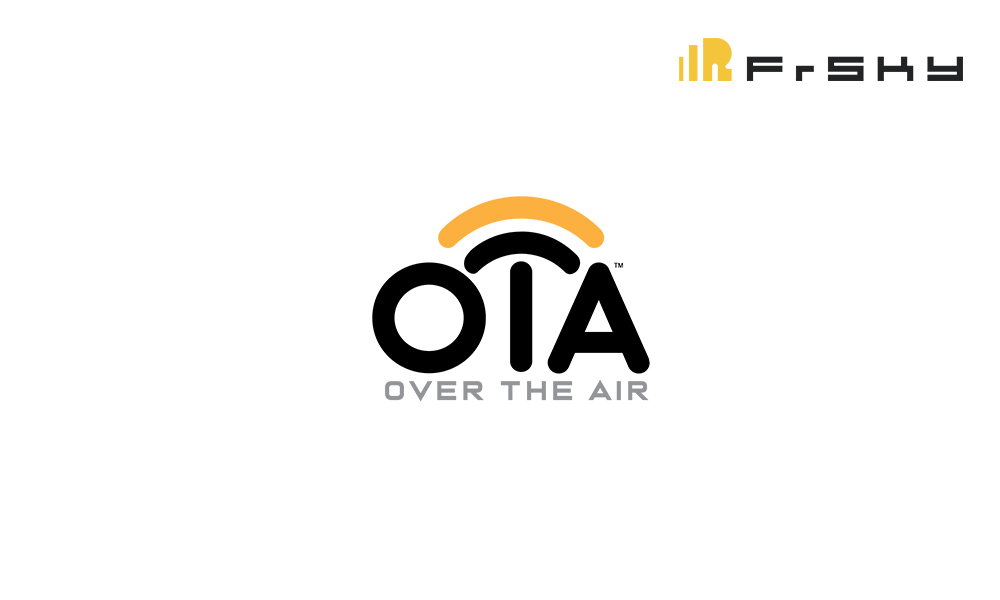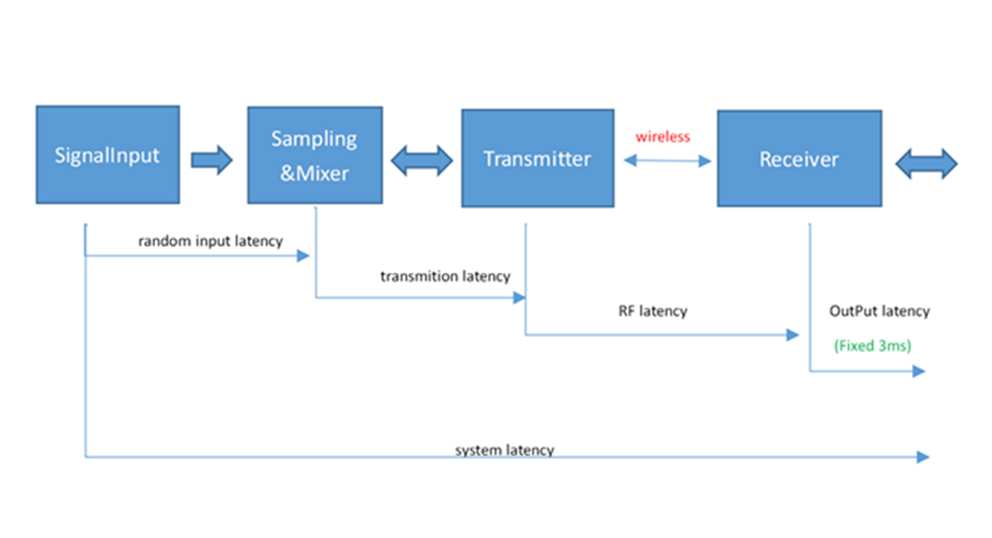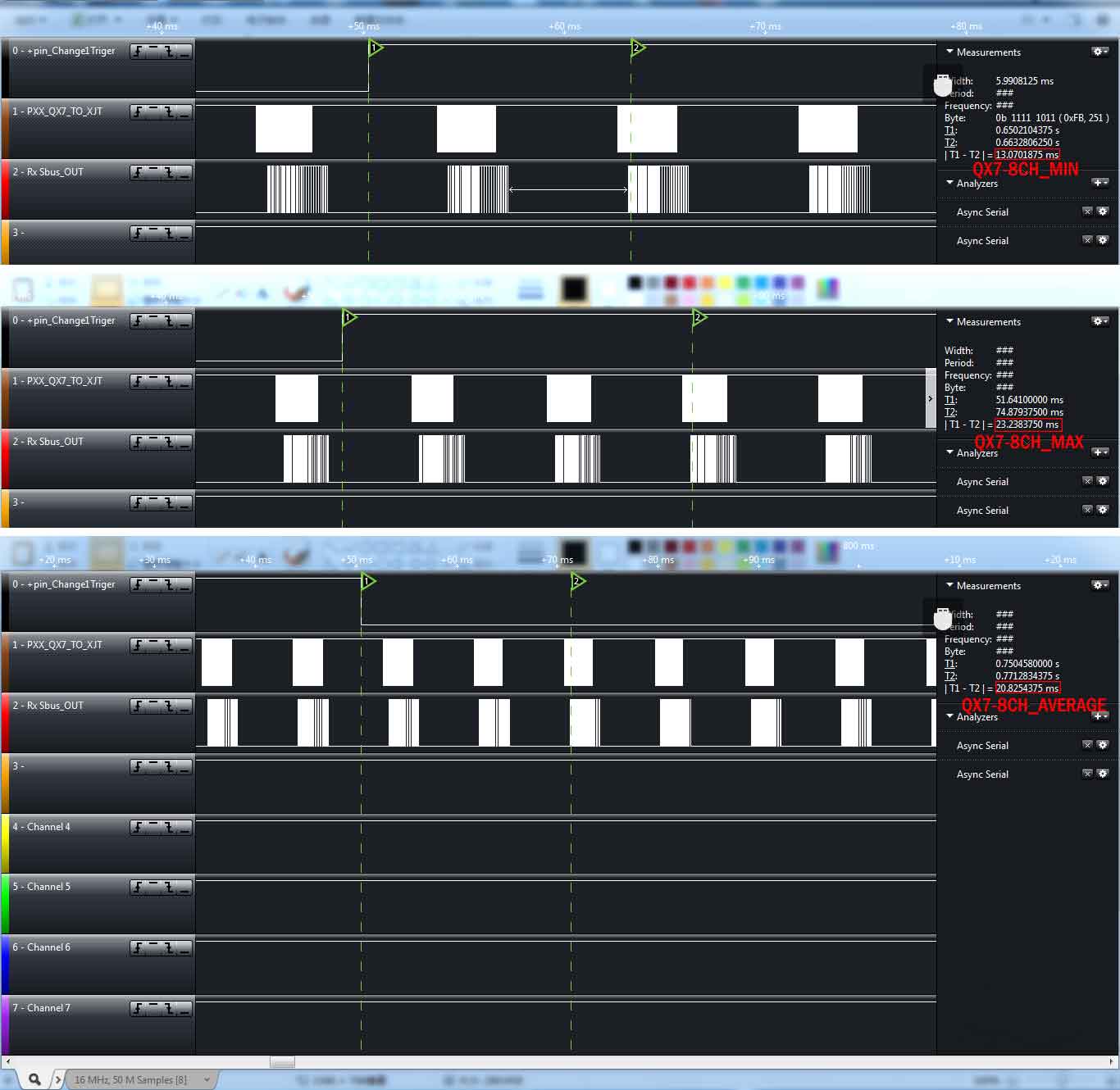Einführung:
FrSky ist ständig bemüht, die Leistung und Zuverlässigkeit des Funkübertragungssystems zu verbessern. Das neue FrSky ACCESS-Protokoll ist das bisher fortschrittlichste, da es mehr Funktionen bietet als die herkömmlichen bekannten Übertragungssysteme.
Neue, ausgezeichnete Ideen wurden von FrSky entwickelt, die die traditionell bekannten Protokolle um weitere Funktionen erweitert. Aufbauend auf dem hervorragend funktionierendem ACCST-Protokoll bietet das neue ACCESS-Protokoll visionäre Funktionen wie Smart Share™, Smart Match™ und Trio Control™.
Sobald ein Empfänger einmal an einem Sender registriert und gebunden wurde, kann dieser jederzeit erneut gebunden werden (z.B. andere Modellspeicher), ohne den Bindknopf des Empfängers zu drücken. Die gemeinsame Nutzung von Modellen mit unterschiedlichen FrSky Fernsteuerungen war noch nie so einfach! Neu ist auch das Update-Verfahren der Empfänger. Diese müssen für das Update nicht mehr mit einem Kabel verbunden werden. Darüber hinaus sind jetzt neue Tools wie ein Spektrum-Analyser und ein Leistungsmesser (Power-Meter) in Ihrer FrSky Fernsteuerung verfügbar sofern sie über ein geeignetes HF-Modul verfügen.
Mit dem ACCESS-Protokoll sind Sie immer auf dem neusten Stand der Technik. Das System wurde dazu entwickelt, um das Bedienerlebnis, egal ob zu Lande, zu Wasser oder in der Luft, zu verbessern, da Ihre Fernsteuerung mit Empfänger mehr kann, als je zuvor!
Hauptfunktionen und Merkmale:
 |
Für einige Modelle werden mehr als 16 Kanäle benötigt, welche vom vorherigen Protokoll bereitgestellt wurden. Für diese Modelle stellt das ACCESS-Protokoll nun bis zu 24 Kanäle bereit. |
 |
Dank der Over-the-Air-Funktion entfällt der direkte Zugriff auf den Empfänger, wenn ein Firmware-Update durchgeführt werden oder Einstellungen vorgenommen werden sollen. Dank OTA geht das nun kabellos. |
 |
Das Binding an Ihr Modell ist so sicher wie nie zuvor. Mit dem ACCESS-Protokoll können Sie ganz einfach ohne auf Ihren Empfänger im Modell zugreifen zu müssen und ohne Knopfdruck binden. Durch die doppelte Registrierung von Fernsteuerung und Empfänger ist der Bindungsprozess noch sicherer als je zuvor. |
 |
Haben Sie schon einmal einen Empfänger mit angesteckten Servos eingeschaltet, nur um herauszufinden, dass alles an dem falschen Steckplatz angeschlossen war? Kein Problem, jetzt können Sie die Kanalreihenfolge auf Ihrer Fernsteuerung einfach neu zuordnen. |
 |
Sie können die Telemetrie von bis zu 3 Empfänger gleichzeitig über die Fernsteuerung konfigurieren. Es müssen keine STK-Tools mehr verwendet werden. Der Smart Port ermöglicht die Verwendung von Ein- und Ausgabegeräten von Drittanbietern mit Durchreichmodus. |
 |
Sie können nun mit Ihrer Fernsteuerung die Funkwellen überwachen, welche die Signalstärke der Fernsteuerung und andere Funksignale in Ihrer Nähe messen kann. Der Spektrum-Analysator ermöglicht es dem Benutzer, die Leistung, das Rauschen und die Verzerrung der umliegenden Frequenzen zu messen. |
 |
Die HF-Leistung externer Geräte kann mit dieser neuen Funktion gemessen werden. |
Höhere Verschlüsselung bedeutet mehr Sicherheit, so dass das Funksignal zwischen Fernsteuerung und Ihrem Modell nicht beeinträchtigt werden kann. | |
System Performance
Erhöhte Leistung durch ständige Verbesserung der FrSky-Produkte!
Latenz
 |
 |
 |
Steuerung und Telemetriebereich
Fragen und Antworten:
F1: Was ist Smart MatchTM?
A: Mit Smart MatchTMerhalten Sie jetzt eine zusätzliche Sicherheit, bevor Sie fliegen, da Fernsteuerung und Empfänger durch eine doppelte Registrierung gebunden werden. Das bedeutet, doppelter Schutz.
F2: Was ist Smart ShareTM?
A: Jetzt können Sie mehrere Fernsteuerungen an einen Empfänger binden und Smart ShareTM stellt sicher, dass Sie für jede Fernsteuerung eine eindeutige Registrierung haben. Wenn Sie z. B. am Wettbewerb teilnehmen, können Sie eine zweite identische Fernsteuerung einrichten. Falls Sie dann auf den Ersatzsender zurückgreifen müssen, ist der Empfänger sofort gebunden ohne dass sie den Bindknopf drücken müssen. Durch Smart ShareTMist alles sofort gebunden und bereit für den Einsatz. Viele Vereine nutzen eigene Trainerflugzeuge, um neuen Mitgliedern zu helfen. Mit Smart ShareTM ist es jetzt einfach, autorisierte Fernsteuerungen mit dem Empfänger des Trainermodells zu verbinden. Es können also mehrere Lehrer Ihren Sender am Trainermodell nutzen ohne den Empfänger neu zu binden.
F3: Was ist Trio ControlTM?
A: Das ACCESS-Protokoll ermöglicht es mit einer Fernsteuerung, das Signal und/oder die Telemetrie für/von bis zu 3 Empfängern pro Modell zu steuern/empfangen. Die Redundanz-Funktion der Empfänger bietet eine weitere zusätzliche Sicherheit beim fliegen größerer Modelle.
F4: Was sind die Verbesserungen des ACCESS-Protokolls im Vergleich zum ACCST-Protokoll?
A: Das ACCESS-Protokoll unterstützt bis zu 24 Kanäle mit erhöhter Übertragungsrate und geringerer Latenz (Gesamtlatenzzeit von Knüppelbewegung zum Empfänger-Kanal-Ausgang) und der verbesserten Leistung.
F5: Gibt es Unterschiede zwischen dem alten und dem neuen Produkt bei der Verwendung des ACCESS-Protokolls?
A: Ja! Einige der neuen Funktionen wie der Leistungsmesser (Power-Meter) wurde für die neuen FrSky-Fernsteuerungen (z.B. Taranis X-Lite Pro) entwickelt und optimiert. Wenn es um die Übertragungssicherheit und -leistung geht, ist das neue, verbesserte HF-Modul speziell für die Verwendung des neuen ACCESS-Protokolls konzipiert. Dies bietet eine bessere Verbindung als bei Verwendung mit einem Standard HF-Modul.
F6: Welches Frequenzband wird vom neuen ACCESS-Protokoll unterstützt?
A: Das FrSky ACCESS-Protokoll kann sowohl auf den Frequenzbändern auf 2,4GHz sowie auf 900/868MHz mit unterschiedlichen Leistungen angewendet werden. Das ist vor allem wichtig in Verbindung mit den neuen Fernsteuerungen, HF-Modulen und Empfängern die mit zwei Frequenzen parallel funktionieren. Davon werden einige noch dieses Jahr auf den Markt kommen.
F7: In welchem Szenario kann ich die Smart ShareTM Funktion verwenden?
- Ein Modellbauer hat drei verschiedene FrSky Fernsteuerungen, für jedes Modell eine eigene. Nun möchte er alle Modelle mit einer einzigen der drei Fernsteuerungen betreiben. Kein Problem, solange der Modellbauer bereits einmal alle Empfänger mit den vorhandenen Fernsteuerungen verbunden hatte. Er muss nicht mehr das altbekannte Bindingverfahren durchführen, da das Binding gespeichert ist.
- Wettbewerbspiloten haben meistens eine Backup-Fernsteuerung, falls mit der Haupt-Fernsteuerung etwas Unvorhersehbares passiert. In diesem Fall kann der Pilot einfach auf die Backup-Fernsteuerung wechseln. Da diese bereits mit dem Modell gebunden ist, muss kein Binding mehr durchgeführt werden. Ein gleichzeitiger Betrieb von zwei Sendern (eingeschalteter Backup Sender) mit einem Empfänger ist derzeit noch nicht vorgesehen, da das aus Sicherheitsgründen noch fraglich ist. Generell ist dieser Option aber denkbar.
- Oft werden in Vereinen vereinseigene Modellflugzeuge genutzt, wie z. B. Schleppflugzeuge oder Trainingsflugzeuge. Diese Modelle benötigen keine bestimmte Fernsteuerung mehr und können von autorisierten Piloten mit eigener FrSky-Fernsteuerung mit seiner eigenen eindeutigen Identifikations-ID verwendet werden.
- Modellbauer 1 möchte einem Modellbauer 2 sein Modell ausleihen. Dieses Modell kann der Modellbauer 2 dann ohne drücken des Bindknopfes an seinem Sender binden. Gibt der Modellbauer 2 das Modell an den Modellbauer 1 zurück, kann dieser ebenfalls ohne die altbekannte Bindingprozedur ein Re-Bind durchführen.
F8: Welche Empfänger unterstützen das ACCESS-Protokoll?
A: Die erste Reihe von Updates beinhaltet RX4R, RX6R, G-RX6 und G-RX8. Die zweite Charge wird RXSR, XM, XM, XM Plus beinhalten.
F9: Gibt es verschiedene Versionen von ACCESS-Empfängern und -Sendern für verschiedene Regionen?
A: Die Sender verfügen über getrennte Modi (LBT- und Non-LBT-Modus). Der ACCESS-Empfänger erkennt automatisch den Arbeitsmodus entsprechend dem Sender, wenn er kommuniziert. Der LBT-Modus funktioniert nur in der EU. Benutzer in den USA und anderen Ländern können zwischen beiden Modi wählen.
F10: Ist es möglich, meine ACCST-Empfänger mit einem neuen ACCESS-Sender zu fliegen?
A: Ja, Benutzer können die ACCST D16 Empfänger mit einem neuen ACCESS Sender binden. FrSky hat auch die externen Optionen (XJT und XJT Lite) für Benutzer, um die älteren Empfänger zu binden.
Q11: Das externen HF-Moduls für neuen FrSky-Fernsteuerungen.
A: FrSky wird hauptsächlich die 8-polige Modulschnittstelle (Lite-Version) für die neuen kommenden Fernsteuerungen verwenden. Für Hersteller eines anderen Übertragungssystems (Drittanbieter), welche die folgenden Anforderungen erfüllen, bietet FrSky die notwendige Unterstützung bei Soft- und Hardware einschließlich des technischen Materials, des Interface-Designs usw. an.
1. Die externen Module von Drittanbietern sollten durch den FrSky-Kompatibilitätstests verifiziert werden
2. Der Hersteller (Drittanbieter) verletzt nicht das geistige Eigentum anderer (Einzelperson, Organisation und Unternehmen).
Die Verwendung eines nicht verifizierten externen Moduls kann zu Produktbeeinträchtigungen führen. Der nicht verifizierte Dritthersteller ist für eventuell auftretende Schäden verantwortlich, und die FrSky-Garantie erlischt.
F12: Was sind die beteiligten Phasen eines kompletten Latenztests?
A: Die Latenzzeit tritt grundsätzlich in 4 Phasen auf,
1. Zufällige Eingangslatenzzeit
2. Übertragungslatenzzeit
3. HF-Latenzzeit
4. Ausgabelatenzzeit (fest 3ms)
 |  |  |
Hinweis:
Da die Entwicklung dieses neuen Protokolls noch nicht komplett abgeschlossen ist, sind Änderungen noch möglich. Deshalb sind diese Informationen als Ausblick auf die Markteinführung zu sehen und nicht als finale Leistungsbeschreibung.
(Stand bis 18.10.2019 berücksichtigt. Angaben ohne Gewähr.)




























